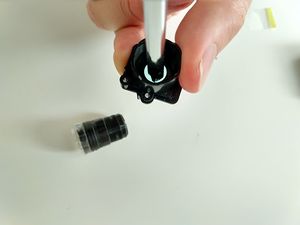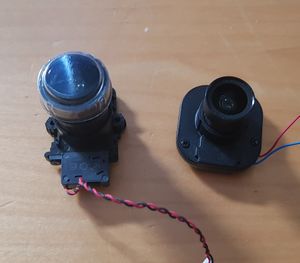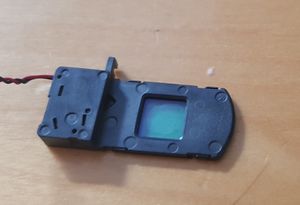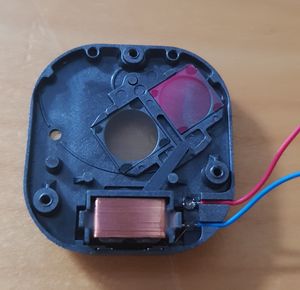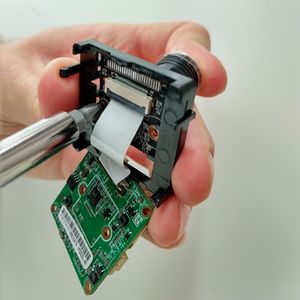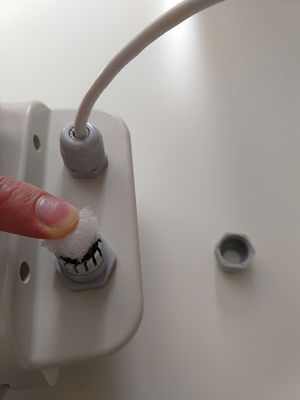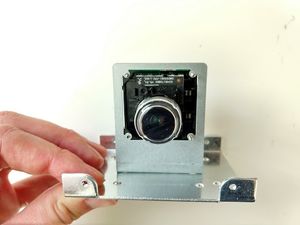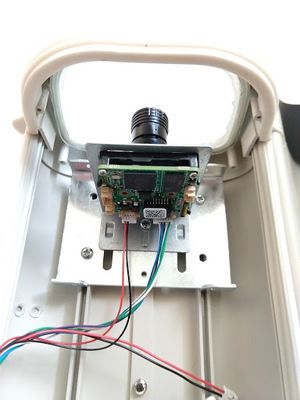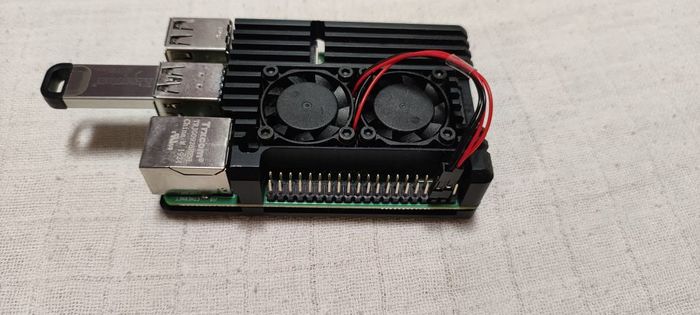Build the camera itself: Difference between revisions
RadimStano (talk | contribs) |
mNo edit summary |
||
| Line 1: | Line 1: | ||
Most people think this section is the most fun. Here, you put all the pieces together. If you find something that is not particularly clear, let us know in the forums. | |||
= | <table><tr><td> | ||
== 1. Prepare the lens == | |||
There are two types of lens holders - a holder with a single filter and a holder with an electronic filter drawer. | |||
[[File:Irblock.jpg|thumb|right|single filter: punch out the filter]] | [[File:Irblock.jpg|thumb|right|single filter: punch out the filter]] | ||
a. Remove the protective covers from the sensor and the lens. | |||
: '''IMPORTANT:''' Be careful not to touch the sensor after you remove the cover. | |||
The cameras come with an IR Block filter in the lens holder, but we do not use this filter. | |||
b. If you have a lens with a single filter like the one shown in the first image, unscrew the lens from the holder. | |||
c. With a screwdriver, carefully push the filter out of the lens holder, as shown in the image on the right. | |||
: '''NOTE:''' If you push from the front, the filter may come out intact. If it shatters, make sure to remove all the shards. | |||
: Some lenses have an electronic day/night filter drawer and a small cable that plugs into the camera board. Two types of filter holders are shown here. | |||
[[File:lensholders2.jpg|thumb|right|Two sorts of lens holder with day/night filters]] | [[File:lensholders2.jpg|thumb|right|Two sorts of lens holder with day/night filters]] | ||
: '''WARNING:''' DO NOT try to directly punch out the filter. This action may jam the mechanism or leave shards of glass inside. | |||
d. If your holder is the type with a rectangular sliding drawer, remove the screw on the end and remove the drawer. | |||
Then remove the while filter glass entirely. | |||
[[File:slidedrawer.jpg|thumb|right|Sliding type: Remove the filter entirely]] | [[File:slidedrawer.jpg|thumb|right|Sliding type: Remove the filter entirely]] | ||
e. If your holder has a single drawer, remove the three small screws on the top and take off the cover. | |||
f. Remove the clear filter. | |||
: You can leave the reddish daylight filter. | |||
[[File:rotatingfilter.jpg|thumb|right|Rotating type: Remove just the clear filter]] | [[File:rotatingfilter.jpg|thumb|right|Rotating type: Remove just the clear filter]] | ||
g. Reassemble the filter holder, but do not connect the power cable to the camera. | |||
h. Turn the lens holder over to see two plastic nubbins on the underside of the lens holder. | |||
: Use wire cutters to snip off the nubbins. | |||
: '''NOTE:''' You must make the base completely flat. | |||
i. Screw the lens back into the lens holder. | |||
</td></tr></table> | </td></tr></table> | ||
<table><tr><td> | <table><tr><td> | ||
Revision as of 22:54, 27 August 2025
Most people think this section is the most fun. Here, you put all the pieces together. If you find something that is not particularly clear, let us know in the forums.
1. Prepare the lensThere are two types of lens holders - a holder with a single filter and a holder with an electronic filter drawer. a. Remove the protective covers from the sensor and the lens.
The cameras come with an IR Block filter in the lens holder, but we do not use this filter. b. If you have a lens with a single filter like the one shown in the first image, unscrew the lens from the holder. c. With a screwdriver, carefully push the filter out of the lens holder, as shown in the image on the right.
d. If your holder is the type with a rectangular sliding drawer, remove the screw on the end and remove the drawer. Then remove the while filter glass entirely. e. If your holder has a single drawer, remove the three small screws on the top and take off the cover. f. Remove the clear filter.
g. Reassemble the filter holder, but do not connect the power cable to the camera. h. Turn the lens holder over to see two plastic nubbins on the underside of the lens holder.
i. Screw the lens back into the lens holder. |
Attaching the Lens to the Camera
|
Preparing the Camera Housing
|
Attaching the CameraNote: I recommend installing the camera in the housing at this point so that you do not have to detach the cables or risk knocking focus later on. However, you can proceed to test focus etc before installing the camera in the housing if you wish. If you prefer to do that, skip this section for now and come back later. Otherwise:
See image for the proper camera board orientation, so the video is not sideways or upside down. |
Installing the Camera in the Housing
|
Perfect! Now you have the camera part ready. Let’s continue with flashing the RMS Linux image onto an SD card or a USB key. Back to the signpost page.
